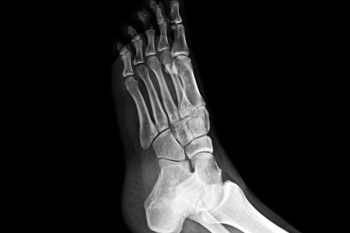
The foot is a remarkable structure composed of numerous bones, joints, ligaments, muscles, tendons, and fascia, all working in harmony to provide stability and mobility. The foot contains twenty-six bones, including the tarsal bones, which form the hindfoot and midfoot. Key tarsal bones include the calcaneus and talus, which support body weight and facilitate movement. Joints between these bones allow for flexibility and range of motion. Ligaments connect bones and provide stability, while muscles and tendons enable movement and support the foot's arches. The plantar fascia, a thick band of connective tissue, plays a vital role in maintaining the arch and absorbing shock. Together, these components allow the foot to adapt to various surfaces, absorb impact, and enable activities such as walking, running, and jumping, highlighting its vital role in overall mobility and balance. If you have foot pain for any reason, it is suggested that you contact a podiatrist who can treat various foot and ankle conditions, and further educate you on foot anatomy.
If you have any concerns about your feet, contact one of our podiatrists from Palmetto Podiatry Group of Anderson. Our doctors can provide the care you need to keep you pain-free and on your feet.
Biomechanics in Podiatry
Podiatric biomechanics is a particular sector of specialty podiatry with licensed practitioners who are trained to diagnose and treat conditions affecting the foot, ankle and lower leg. Biomechanics deals with the forces that act against the body, causing an interference with the biological structures. It focuses on the movement of the ankle, the foot and the forces that interact with them.
A History of Biomechanics
- Biomechanics dates back to the BC era in Egypt where evidence of professional foot care has been recorded.
- In 1974, biomechanics gained a higher profile from the studies of Merton Root, who claimed that by changing or controlling the forces between the ankle and the foot, corrections or conditions could be implemented to gain strength and coordination in the area.
Modern technological improvements are based on past theories and therapeutic processes that provide a better understanding of podiatric concepts for biomechanics. Computers can provide accurate information about the forces and patterns of the feet and lower legs.
Understanding biomechanics of the feet can help improve and eliminate pain, stopping further stress to the foot.
If you have any questions please feel free to contact our office located in Anderson, SC . We offer the newest diagnostic and treatment technologies for all your foot and ankle needs.
